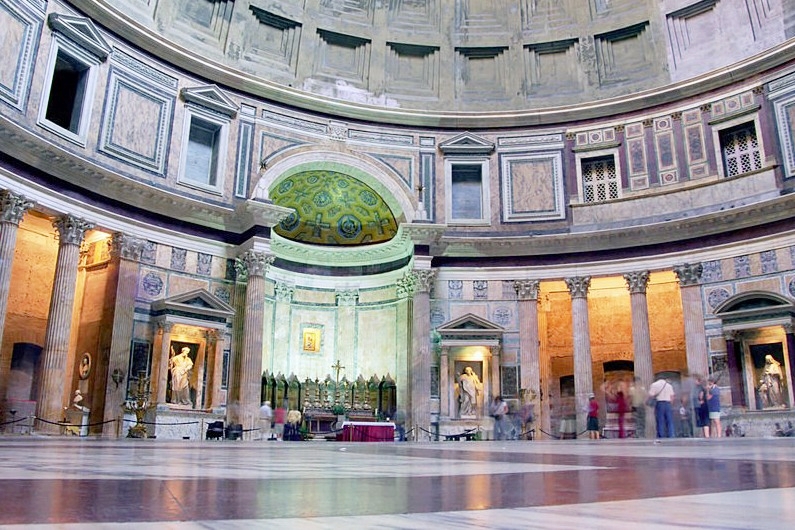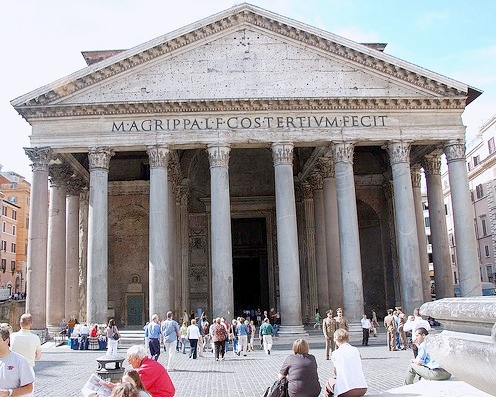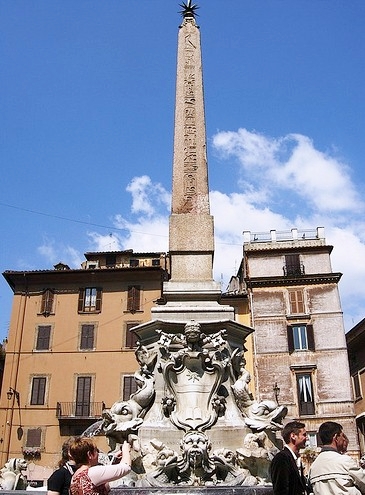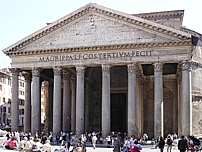Pantheon, RomePantheon, RomeThe Pantheon—a temple built to honor all the gods—has amazed all who has seen it. Michelangelo declared that it was “angelic and not human design” more than 13 centuries after it had been built. The Romans certainly claimed it had divine roots: legend has it that Romulus, mythological founder of Rome, ascended to heaven on the very spot on which it was built. It was only under Hadrian (adopted son of Emperor Trajan) that the Pantheon went through drastic architectural modifications. Hadrian loved Hellenic culture, and remodeled the Pantheon after Greek temples but on a far more flamboyant and elaborate level. The design included a portico, connected to a domed vault or rotonda shaped liked a perfect sphere. The rotonda had an oculus or circular opening that opened up to the heaven and bathed the walls with light. Hadrian’s concept was a “sanctuary of All Gods should reproduce the likeness of the terrestrial globe and of the stellar sphere…the disk of daylight would rest suspended there like a shield of gold; rain would form its clear pool on the pavement below, prayers would rise like smoke toward that void where we place the gods.”  The Pantheon was built with a deep trench for its foundation, which was filled with layers of timber and pozzolona cement made from lime and volcanic material imported from Pozzuoli, Italy. Construction was done in stages, and was slowed down by the lack of machinery, transortation and space due to the surrounding buildings. Records from Vitrivius, a famous Roman architect of the time, showed that laborers would handmix the cement, carry it in baskets, and then tamp in the mortar to remove extra water and strengthen the bond. All materials were carried by boat up the Tiber River even the heavy granite columns from Egyptian quarries that weighed 60 tons each. The dome was made from basalt and pumice, and required tricky centering achieved by heavy wooden scaffolding.  To this day, the Pantheon mystifies experts who wonder how it can continue to stand despite being built on marshy land. Some say it was divine protection; others credit the engineering genius of using strong cement and a gradation process, with the opening acting as a compression ring.  Nonetheless, it is the only building of is size and time that remains in its full majesty to this day. 
|